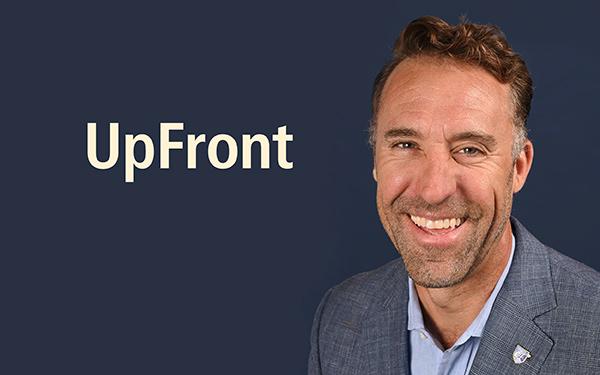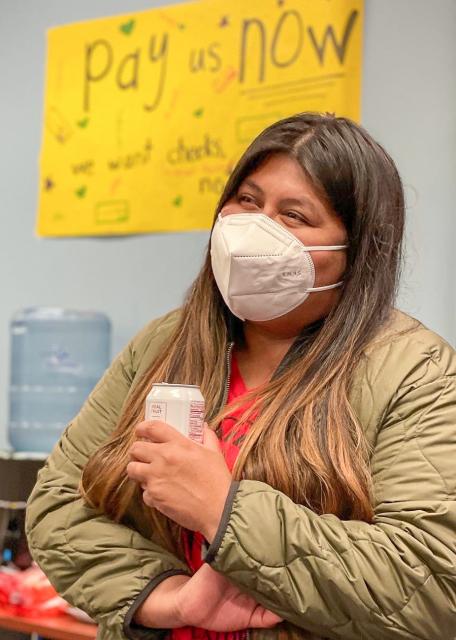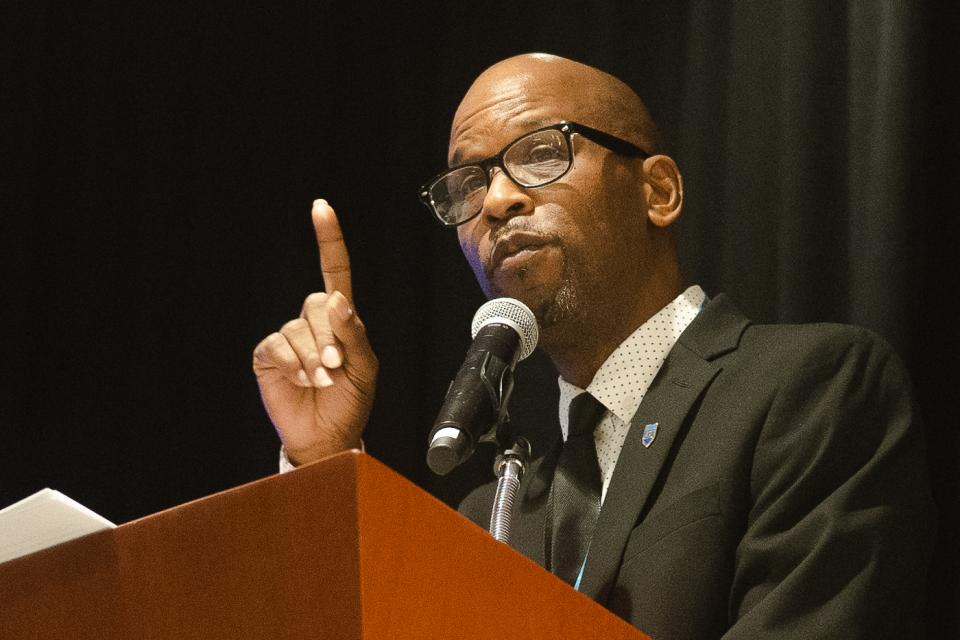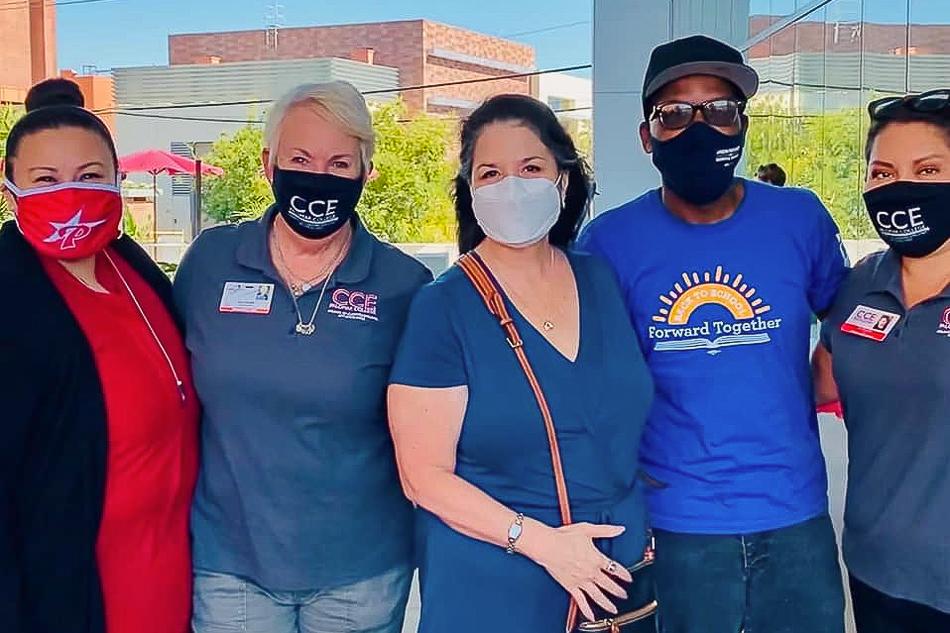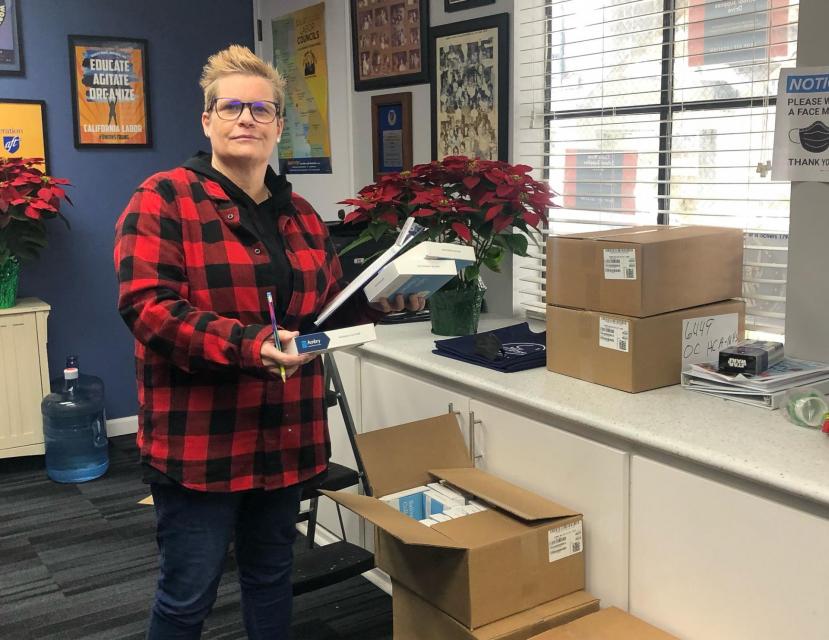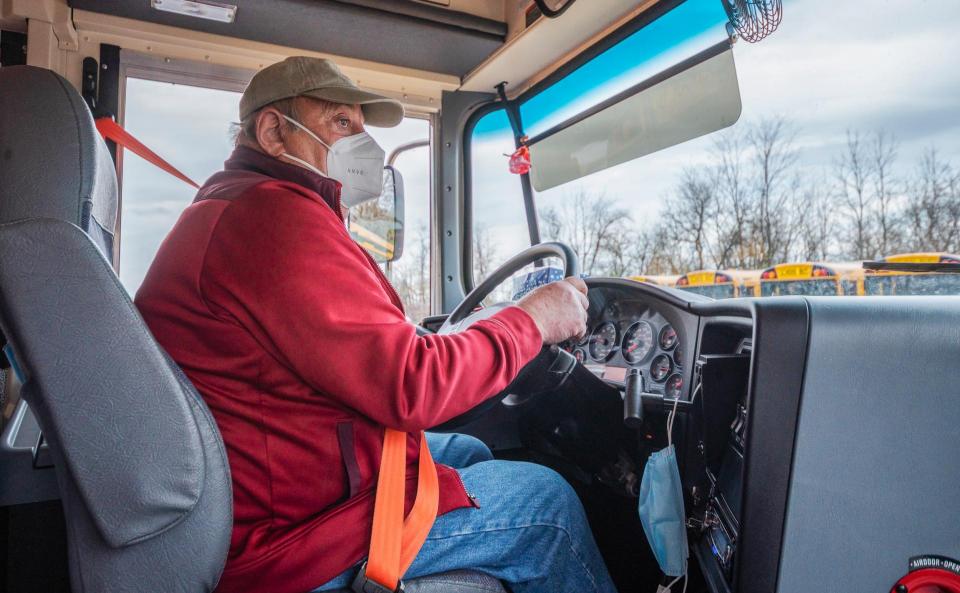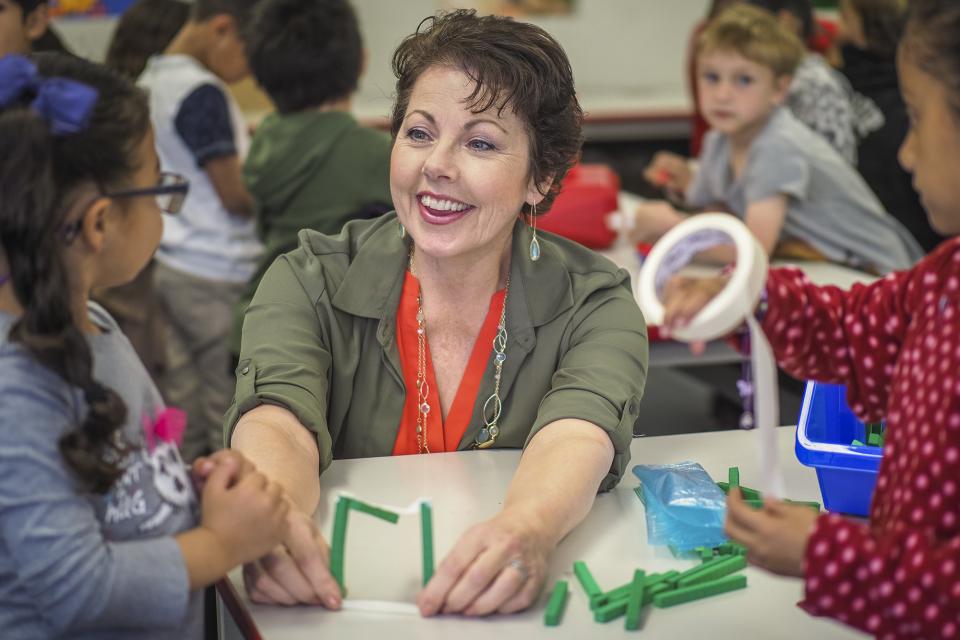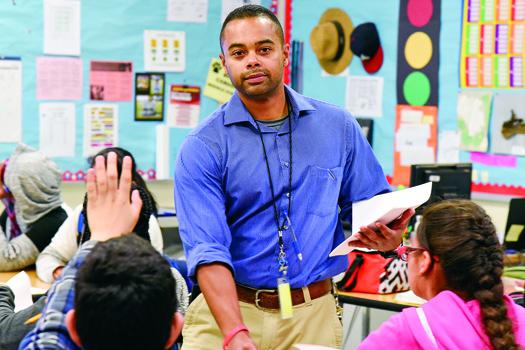We are united for education and justice
Back-to-School tour and opinion poll provide strong foundation for strategic planning
By Jeffery M. Freitas, CFT President
Another school year has started. As an educator, August and September have traditionally been the time when I set New Year’s resolutions for the coming academic year. It starts me off on a positive note to identify my goals, my priorities, and the areas in which I want to learn and grow.
I think about our work at CFT in much the same way, and just like when I was teaching, beginning a new school year as an organization is not just the work of one person. Setting goals for the CFT is not just the work of leaders or the Executive Council. Rather it demands real-time feedback from our membership so that we, as a statewide union, can respond to the issues members identify as top priorities. To do that important work, we have undertaken a number of projects to listen to members and respond to what we have heard.
In our voices: The state of our schools, workers, and students
Educators report staff shortages, mental health issues are ubiquitous
Yajaira J. Cuapio has been a social worker in the San Francisco Unified School District for eight years. With the pandemic, she says the last couple of years have been challenging.
“Students have been isolated for so long that it’s having an impact on their social skills. They’re arguing and fighting, and it leads to unsafe interactions,” she said. “Then academically there have been disruptions. For one thing, a positive COVID case would cause students to have to quarantine for 10 days, and if they’re out that long, truancy is established.”
How does a district build a village for teachers and staff?
Innovative, affordable, and comfortable housing in Daly City welcomes new and veteran employees
The Jefferson Union High School District knew it had a problem holding onto staff. The district was losing about 25% of its certificated and classified employees yearly, and a survey showed that many were leaving the Daly City school district because of the high cost of housing.
AFT task force tackles national staff shortages in education
CFT seeks to set minimum salaries and hourly pay
COVID didn’t create the national staffing crisis we face, but the pandemic has stretched classified and certificated members so thin that some schools have been forced to shut their doors.
AFT has stepped up to the challenge and created an Education Staffing Crisis Task Force co-chaired by Carl Williams, head of the CFT Council of Classified Employees and an AFT Vice President, and Michael Mulgrew, leader of AFT’s largest local union, New York City’s United Federation of Teachers.
Classified leaders hit the road to meet locals
Listening tour leads to greater understanding, solidarity
After more than a year of Delta and Omicron surges and other COVID-19 pandemic obstacles, officers of the CFT Council of Classified Employees embarked on a statewide listening tour of AFT local unions representing classified employees.
“There will never be a perfect time, so we just hit the road,” said CCE President Carl Williams. “Our members have heard what we have to say. Now they want to be heard.”
Overwork, underpayment, burn out and blame, lead to staff shortages
Unions speak to pandemic-driven shortage of teachers, subs, paras, classified
For years, California elementary and secondary schools have had teacher shortages, particularly in areas of special education, math, and science, but it’s grown worse since the pandemic started, with fewer teacher candidates getting credentials, and 26% more teachers retiring in 2020 than the year before.
What does classified work look like 20 months into the pandemic?
Staff shortages, vaccine mandates, strict school bus protocols, but also pay raises and lots of union support
California schools reopened to a new normal. Classified staff are getting their arms around vaccine mandates and making safety protocols part of their daily routines. And nearly every district, from rural elementaries to urban community colleges, are facing serious labor shortages.
Back-to-School Tour puts staff shortage in stark perspective
Dedication and inspired work of our members must be recognized
By Jeffery M. Freitas, CFT President
In early August, Luukia Smith, Lacy Barnes, and I ventured up and down the state on a three week Back-to-School, Forward Together Tour. We visited with early childhood educators, TK-12 teachers, classified workers, adult education teachers, and part-time community college faculty. We witnessed firsthand students learning in-person. We saw the incredible school communities our members have helped to build and visited campuses and classrooms to see CFT members in action.
Nearly 300 classified employees have become teachers, 2000 in pipeline
Update: Classified Employee Teacher Credentialing Program
An innovative state program has helped transform nearly 300 classified employees into credentialed teachers, with about 2,000 more staff in the pipeline, according to a report from the Commission on Teacher Credentialing.
Classroom veteran looks forward to being a teacher
FIRST PERSON | By Laura L. Manriquez, Carpinteria Association of the United School Employees
I recently became aware of an opportunity to obtain financial assistance in earning a teaching credential through the California Classified School Employee Teacher Credentialing Program, which is intended to attract classified staff who are interested in becoming teachers.
Sacramento doubles down on teacher credentialing program for classified
In 2016, the CFT co-sponsored legislation to establish a teacher credentialing program for classified employees, and the 2016-17 state budget included $20 million to fund the campaign for five years.
Classified win family sick leave and grants to become teachers
Classified employees took two giant steps forward in Sacramento during 2016 after the CFT shepherded four bills through the state Legislature that address staff priorities. Gov. Jerry Brown signed two of the bills.
AB 2122 appropriates $20 million over five years to encourage classified employees to return to school and become teachers. Grants from the California Classified School Employee Teacher Credentialing Program to districts and county offices of education will provide up to $4,000 annually to staff seeking a bachelor’s degree and credential.
CDE releases request for proposals for credentialing program
Classified School Employee Teacher Credentialing Program
Updated October 11, 2016
The annual budget passed by the state Legislature and signed by the governor includes an appropriation of $20 million over five years to fund a CFT co-sponsored piece of legislation known as the California Classified School Employee Teacher Credentialing Program.
Right for the job: When classified and paras become teachers
CFT-sponsored AB 2122 helps staff transition to certificated status
Carlos Howe began working as a security officer for the Hawthorne School District in 2000, but he wanted more. After earning his bachelor’s degree in criminal justice administration, Howe joined the Santa Monica Police Department. It wasn’t a good fit.
“My hair was on fire everyday. I had recently married and was a brand new father, but it was dangerous and I was always gone, so I switched gears.”
Right for the job: When paras and classified become teachers
CFT sponsors bill to assist support staff transition to certificated status
When Shannon Ferguson was a 20-something, she didn’t really focus on her community college studies, and after a few semesters her father suggested she look for a job with good benefits.
“He said that soon his benefits wouldn’t cover me anymore,” Ferguson recalled. “Dad was a teacher and mom was a paraeducator, so I naturally thought of applying with the Oxnard high school district.”
Crisis in the classroom: California confronts teacher shortage
Poor working conditions, modest pay, and teacher bashing exact a toll
A decade of bashing teachers has left California and the nation with a dire shortage. Demand for K-12 teachers has increased while the new teacher supply is at a 12-year low.
Enrollment in California’s teacher preparation programs has dropped by 76 percent over the last decade, far below what is needed to fill vacancies, according to Linda Darling-Hammond, faculty director at the Stanford Center for Opportunity Policy in Education.

